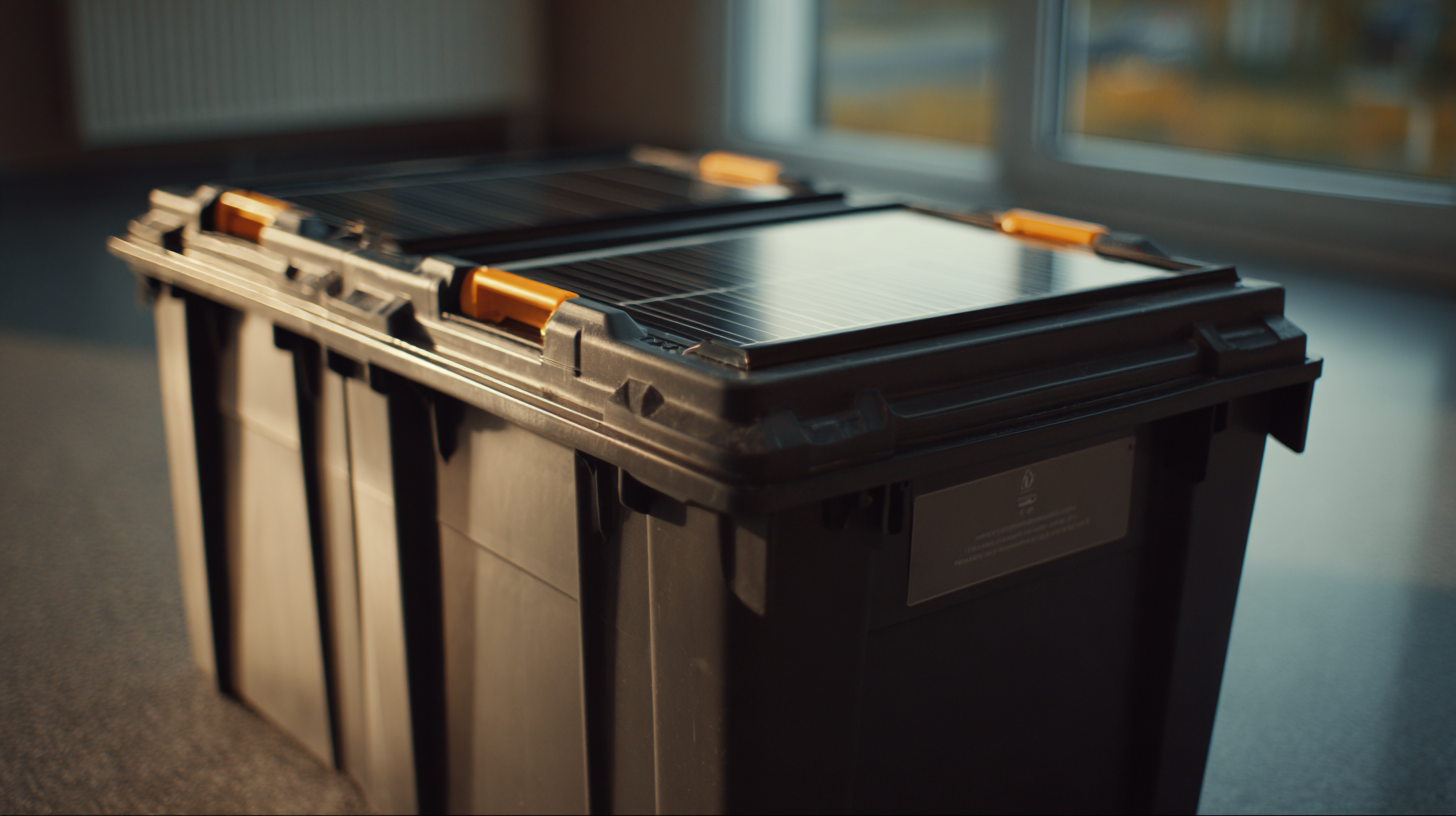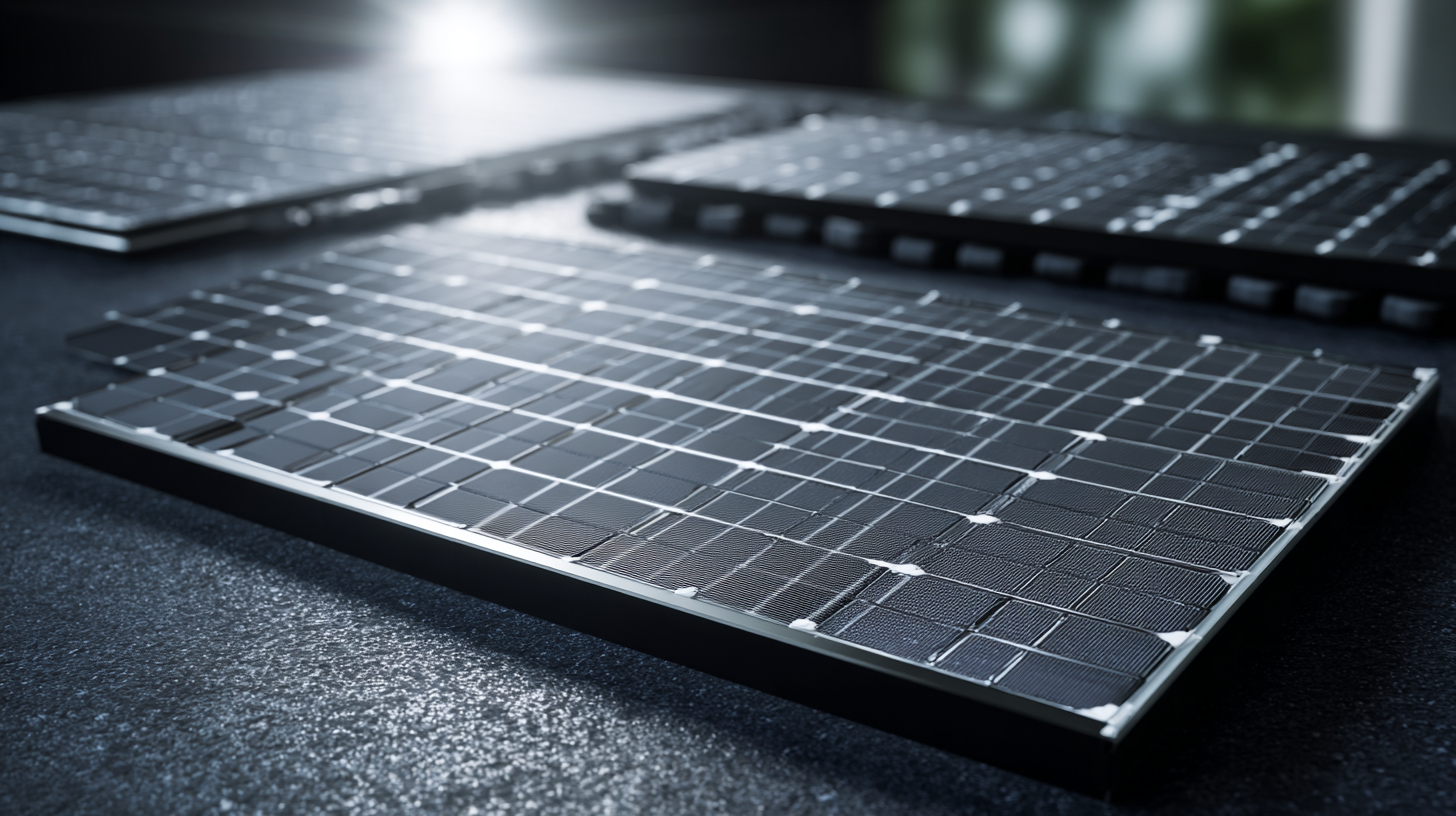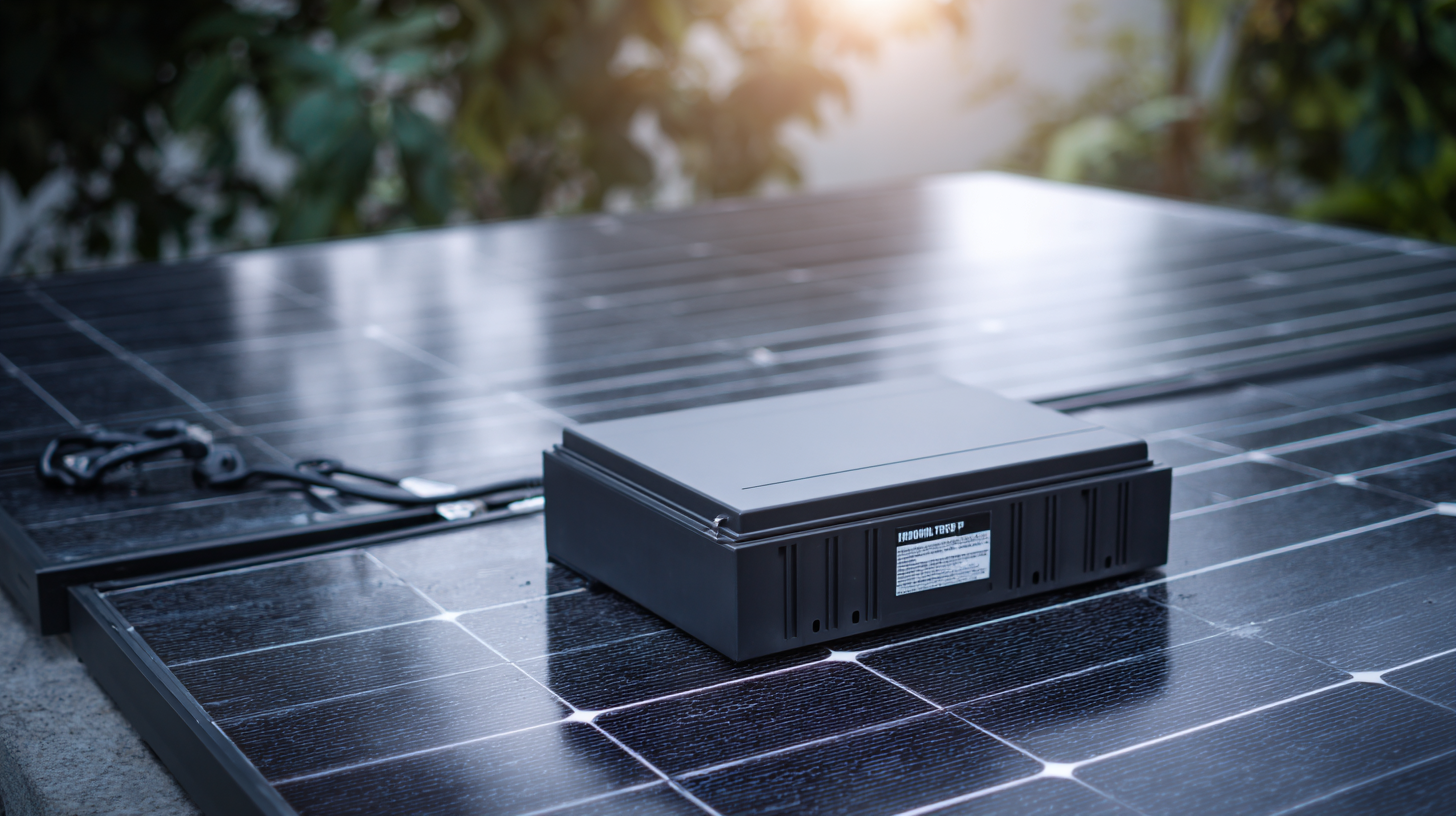As we venture into 2025, the solar energy market is undergoing significant transformations, particularly in the realm of solar panel battery technology. With the global solar panel battery cost expected to decrease by approximately 30% over the next few years, as reported by the International Renewable Energy Agency (IRENA), consumers and businesses alike are recognizing the immense potential of solar energy storage solutions. This decline in costs is not just a financial boon; it also aligns with the growing emphasis on sustainability and energy independence. Moreover, advancements in battery technology, such as the incorporation of lithium-ion and solid-state batteries, are pushing the boundaries of efficiency and lifespan. This blog will explore the technical specifications of emerging cost-effective solar panel batteries, delving into the latest trends and innovations designed to meet increasing energy demands and improve overall performance.

When considering the integration of solar panel batteries into your renewable energy system, understanding the fundamental aspects of these batteries is crucial for optimizing cost-effectiveness. According to the "Global Energy Storage Market" report by IHS Markit, the demand for battery storage is expected to grow significantly, with annual installations projected to exceed 200 GWh by 2025. This increasing demand highlights the importance of selecting the right battery to complement your solar setup.
Solar batteries come in various types, each with unique characteristics impacting their efficiency and longevity. Lithium-ion batteries are currently the most popular choice for solar storage, thanks to their higher energy density and longer lifespan, which can reach up to 15 years or more. Data from BloombergNEF reveals that the cost of lithium-ion battery packs has declined by approximately 90% since 2010, making them more accessible for homeowners looking to enhance their solar energy systems.
In contrast, lead-acid batteries, while cheaper initially, often have shorter lifespans and lower efficiency, resulting in higher long-term costs. Therefore, understanding these battery types and their economic implications is essential for anyone looking to invest in a sustainable energy future.
When evaluating affordable solar panel batteries, several key technical specifications emerge as critical factors for decision-making. First, battery capacity, typically measured in kilowatt-hours (kWh), indicates how much energy can be stored. For budget-conscious consumers, batteries with a capacity ranging from 5 kWh to 10 kWh are commonly recommended, as this covers the daily energy needs of an average household without breaking the bank. According to a report from the National Renewable Energy Laboratory (NREL), this range is optimal for effectively powering appliances during peak usage times while maintaining cost efficiency.
Another essential specification is the battery's depth of discharge (DoD), which signifies the percentage of the battery that can be safely used without compromising its lifespan. Affordable solar batteries typically offer a DoD between 80% to 90%, allowing users to maximize the energy extracted from their battery system. Furthermore, cycle life, defined as the number of complete charge and discharge cycles a battery can endure before its capacity significantly depletes, is also vital. Reports suggest that lithium-ion batteries, often seen in budget options, can achieve cycle lives of up to 3500 cycles, making them a cost-effective choice over time. By focusing on these specifications, consumers can make informed decisions while ensuring they invest in reliable, economical solar battery solutions.

When it comes to finding the best budget solar battery options, a thorough comparison is essential. Many consumers are interested in maximizing their energy storage without breaking the bank. Starting from 2025, the solar battery market has seen various players emerging with products that not only promise reliability but also affordability.
Analyzing the current offerings can help homeowners make informed decisions that align with their energy needs and financial constraints.
Recent trends indicate that prices for solar batteries are becoming increasingly competitive, particularly in regions like Nigeria, where options range from 100Ah to 200Ah. It's crucial to compare the features and costs of both new and used batteries to find the best deal.
Additionally, understanding the long-term savings associated with solar battery storage can provide insights into the value of your investment.
With the right research, you can ensure that the budget solar battery you select will not only serve your immediate needs but will also pay off in the long run through reduced energy costs.
When it comes to extending the life and efficiency of solar batteries, proper maintenance and usage practices are crucial. Regularly monitoring the state of charge is essential; keeping your batteries within the optimal range of 20% to 80% can significantly enhance their lifespan. Additionally, employing a battery management system (BMS) can help in balancing charge levels and preventing overcharging, which is critical for maintaining the health of the batteries.

Temperature plays a vital role in battery performance. To maximize efficiency, it’s advisable to store solar batteries in a cool, dry place as excessive heat can lead to a reduction in capacity and an accelerated aging process. Furthermore, periodic cleaning of the battery terminals can help prevent corrosion and ensure good conductivity. Combining these simple yet effective practices will not only improve the operational efficiency of your solar batteries but also ensure that you get the best return on your investment in solar energy.
When it comes to solar panel batteries, many consumers hold a common misconception that lower-priced options automatically imply subpar performance. However, recent industry reports indicate that this is not always the case. According to a 2022 report by the National Renewable Energy Laboratory (NREL), advancements in battery technology have led to cost-efficient solutions that still deliver robust performance. For instance, lithium iron phosphate (LiFePO4) batteries, known for their long life cycles and safety features, are now available at competitive prices without sacrificing durability or efficiency.
Moreover, performance ratings often misrepresent the real value of budget solar batteries. A study published in the Journal of Energy Storage highlights that some affordable models can maintain charging efficiencies of over 90%, comparable to their more expensive counterparts. Additionally, while it is essential to confirm specifications like cycle life and depth of discharge, many budget-friendly options now come with warranties that reflect true longevity. Understanding these nuances can help consumers make informed decisions, ensuring that they invest in solar batteries that align both with their budget and energy needs.